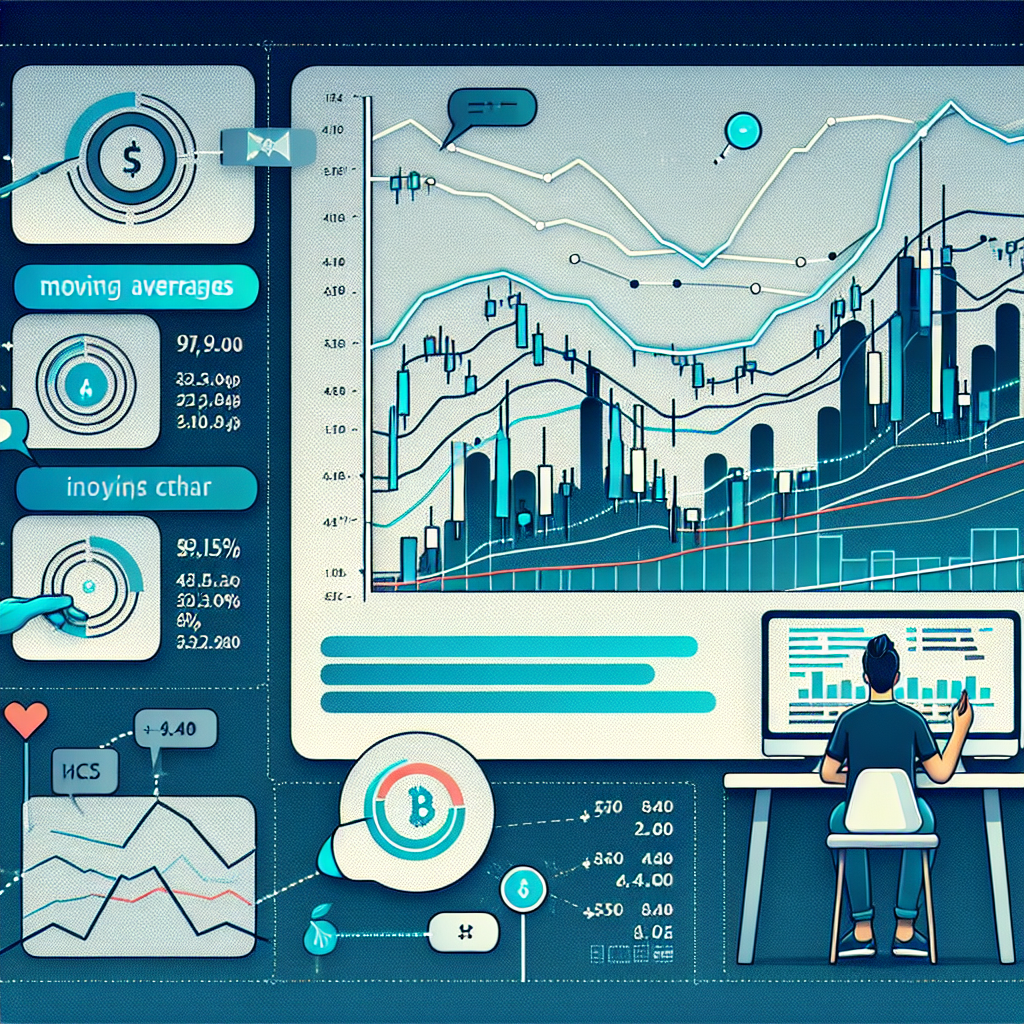How to Use Moving Averages in Crypto Trading
In the fast-paced world of cryptocurrency trading, where volatility reigns, having a reliable strategy is crucial for success. One of the most widely used tools among traders is the moving average (MA). This article explores how to effectively use moving averages in crypto trading, including their types, applications, and practical examples.
Understanding Moving Averages
A moving average is a statistical calculation that helps to smooth out price data by creating a constantly updated average price. This technique aids traders in identifying trends and potential reversal points in the market. There are two principal types of moving averages: Simple Moving Average (SMA) and Exponential Moving Average (EMA).
- Simple Moving Average (SMA): Calculated by taking the arithmetic mean of a specified number of prices over a given period. For example, a 10-day SMA adds up the closing prices of the last 10 days and divides by ten.
- Exponential Moving Average (EMA): Provides more weight to recent prices, reacting quickly to price changes. Due to its sensitivity to recent price movements, many traders prefer the EMA for short-term trading.
Why Use Moving Averages in Crypto Trading?
Moving averages have several advantages that make them a preferred choice for traders:
- Trend Identification: Moving averages can help traders identify whether an asset is in a bullish or bearish trend.
- Support and Resistance Levels: MAs can act as psychological levels where traders expect price reversals.
- Signal Generation: Crossovers between different MAs can indicate potential buy or sell signals.
Practical Applications of Moving Averages
1. Crossover Strategy
A popular method of using MAs is the crossover strategy. This involves two moving averages: a shorter-term MA and a longer-term MA. A common combination is the 50-day and 200-day MAs.
- Golden Cross: Occurs when the shorter MA crosses above the longer MA, indicating a potential bullish trend.
- Death Cross: Happens when the shorter MA crosses below the longer MA, signaling a potential bearish trend.
2. Identifying Trends
Traders can use moving averages to identify the overall market trend. When the price is above the moving average, a bullish trend is likely; when it's below, a bearish trend may be occurring. For instance, if Bitcoin's 50-day EMA consistently remains above its 200-day EMA, it suggests a sustained bullish market.
3. Dynamic Support and Resistance
Moving averages can serve as dynamic support and resistance levels. During a bullish trend, the 20-day EMA often acts as support. Conversely, in a bearish market, it may act as resistance. For example, during the recent bull run of Ethereum, the 20-day EMA acted as support, where prices consistently bounced off this level, leading to considerable gains for traders who used this strategy.
Case Study: Applying Moving Averages in Real-Time Trading
Consider a hypothetical trader analyzing Litecoin (LTC) over a 90-day period using a 20-day SMA and a 50-day SMA. In mid-March, the 20-day SMA crosses above the 50-day SMA, indicating a golden cross. The trader decides to enter a long position. As the price continues to rise, the trader develops a trailing stop-loss strategy based on the 20-day SMA, which would allow them to lock in profits as long as the trend continues.
Challenges and Limitations of Moving Averages
While moving averages are powerful, they are not infallible. Traders should be aware of the following limitations:
- Lagging Indicator: Since MAs are based on past prices, they can lag behind current price movements, leading to late signals.
- False Signals: In a choppy or sideways market, moving averages can produce false signals, resulting in potential losses.
Conclusion
Moving averages are an essential tool for crypto traders, offering insights into trends, potential entry and exit points, and dynamic support and resistance levels. By employing strategies like the crossover or utilizing MAs for market trend identification, traders can enhance their decision-making processes in a highly volatile market. However, it is crucial to combine moving averages with other indicators and market analysis techniques to mitigate the risks associated with trading. As with any strategy, ongoing education and practice will be essential for mastering the use of moving averages in crypto trading.




